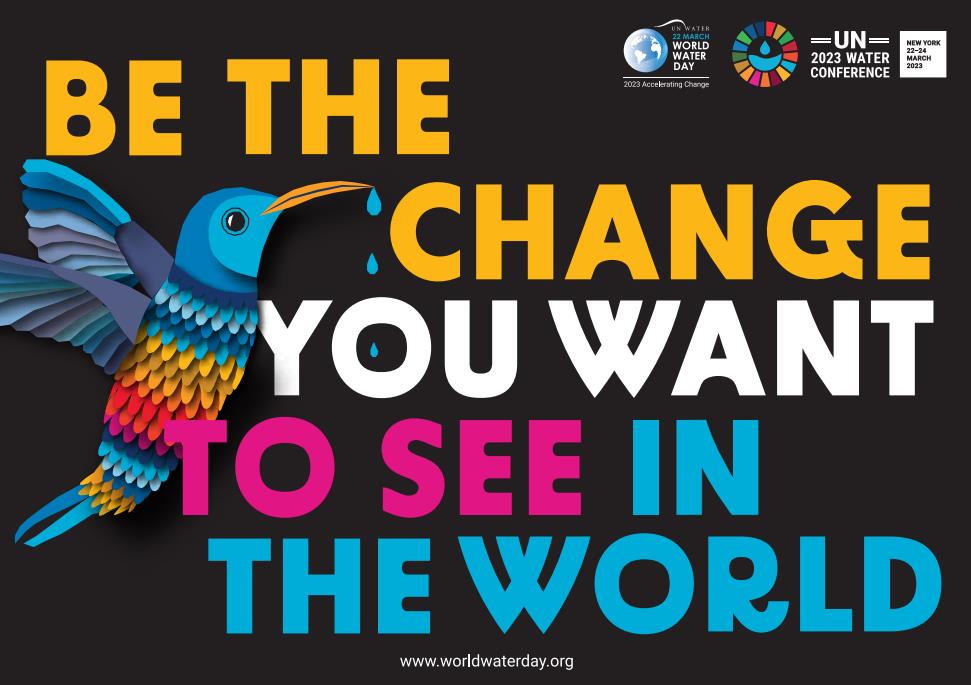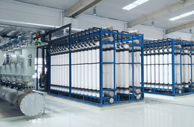
What’s wrong?
World Water Day 2023 is about accelerating change to solve the water and sanitation crisis.
Dysfunction throughout the water cycle is undermining progress on all major global issues,
from health to hunger, gender equality to jobs, education to industry, disasters to peace.
Back in 2015, the world committed to Sustainable Development Goal (SDG) 6 as part of the
2030 Agenda – the promise that everyone would have safely managed water and sanitation
by 2030.
Right now, we are seriously off-track. Billions of people and countless schools, businesses,
healthcare centres, farms and factories are being held back because their human rights to
water and sanitation have not yet been fulfilled.
What can we do about it?
You and your family, school and community can make a difference by changing the way you
use, consume and manage water in your lives.
Your commitments will be added to the larger-scale commitments from governments,
companies, organizations, institutions and coalitions.
Together, these promises will form the Water Action Agenda, to be launched at the UN 2023
Water Conference (22-24 March) – the first event of its kind for nearly 50 years.
This World Water Day is a once-in-a-generation opportunity to unite around water and
accelerate progress together.
Play your part by doing what you can.
First, here is a quick overview of what the water and sanitation crisis actually means.
What is the global water and sanitation crisis?
When we talk about the global water and sanitation crisis, it can be difficult to visualize it.
Facts and statistics are important but they can be impersonal and fail to motivate people to
take action.
So, what would it look like if we applied the global crisis to a community of just 100 people?
25 people would have to collect unsafe water from a stream or pond, often far away, or
queue for hours and pay a high price to a vendor. The water would regularly make them so
sick they couldn’t go to work or school. Death from entirely preventable diseases, like
cholera and typhoid, would be a constant danger.
22 people would either have no choice but to go to the toilet in the streets, bushes or fields,
or to use unhygienic and dysfunctional latrines. Women and girls would suffer most as they
would be more vulnerable to abuse and attack, and unable to properly manage their
menstrual health.
44 people would live in areas vulnerable to disease because their wastewater and faeces
flowed back into nature without being treated. The other 56 people, having safe toilets
connected to systems that safely treat waste, would remain largely unaware of how
important their sanitation services are to protecting their health and well-being.
Around half of the wetlands around the community would have been lost in recent decades,
increasing the risk of flooding.
22 people would either work in, or receive care at, a healthcare facility that has no basic
water service, placing them at heightened risk of infectious diseases. Many of those will be
receiving treatment for diseases that could have been prevented with safe water and
sanitation in the community.
Agriculture and industry nearby would take over 80 per cent of the available water.
Due to climate change, droughts would increasingly hit water resources and food supply.
Floods would threaten to destroy water and sanitation facilities and contaminate water
resources.
The community would be unlikely to have a cooperation agreement with neighbouring
communities to share and protect water.
The poorest and most vulnerable members of the community, who would be
disproportionately affected by the crisis, would face the biggest struggle to get the attention
of authorities to improve their water and sanitation services.































